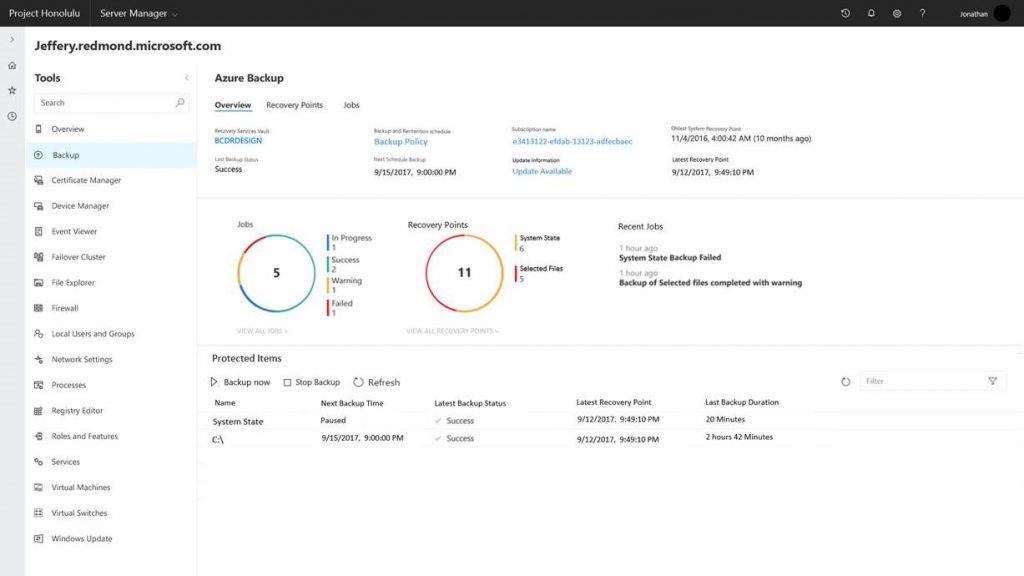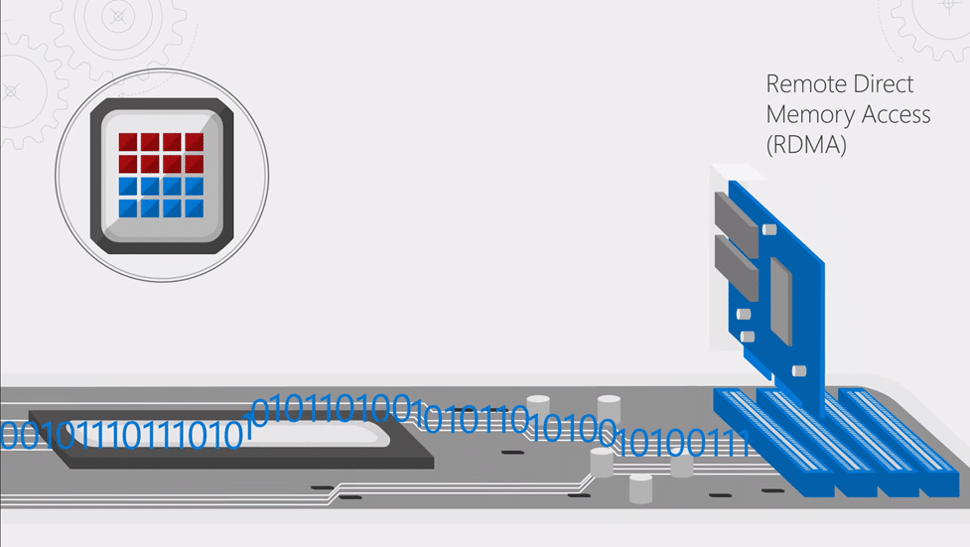Windows Server 2019 is available to preview via Windows Insiders, and will soon be generally available.
Windows Server 2019 is built on the strong foundation of Windows Server 2016. Since its launch at Ignite 2016, Microsoft have been using feedback and product data to improve it. Four themes have been the centre of improvements– Hybrid, Security, Application Platform, and Hyper-converged infrastructure. The latest update includes major advances in managing hyper-converged infrastructure, support for storage class memory, de-duplication coming to ReFS, new hybrid integration between Windows Server data centre and Azure with the Windows app in centre. The latest security enhancements include support for Linux, shielded VMs, and more.

Many companies choose a hybrid approach as they begin the journey to cloud – combining on-premises and cloud environments. A hybrid approach allows for apps running on-premises to take utilise cloud innovation like Artificial Intelligence and IoT. Hybrid cloud enables a future-proof, long-term solution which Connamix can provide for our clients. Windows Server 2019 is compatible with Azure, Azure Stack and windows server software on-premises so companies can find consistency throughout.
The Windows Admin Server (Project Honolulu) is a flexible, lightweight browser-based and locally-deployed platform. It was designed to make it simpler and easier to connect existing deployments of Windows Server to Azure services. Windows Server 2019 and the Windows Admin Server, allows easy integration of Azure services including Azure Backup, Azure File Sync, disaster recovery, and more.


Security is a top priority in today’s industry. Windows Server 2019 has a three fold approach to security; Protect, Detetct and Respond. Protection comes through Shielded Virtual Machines (VMs) which will now support Linux VMs in Windows Server 2019. Windows Defender Advanced Threat Protection (ATP) has been embedded into the 2019 update to provide preventative protection, attack detection and zero-day exploits.
In Windows Server 2019, Microsoft are introducing improvements to compute, storage, and networking components of a Kubernetes cluster. Windows Subsystem on Linux (WSL) was previously extended to insider builds for Windows Server, allowing you to run Linux containers alongside Windows containers on a Windows Server. In Windows Server 2019, WSL continues to receive improvements.


Hyper-converged Infrastructure (HCI) has been a large focus of the Windows Server 2019 update. The advantages of HCI is that it can provide the same capabilities as a larger converged system, in a smaller footprint and at a lower cost.
The new features of this in WIndows Server 2019 inclue deduplication to ReFS formatted volumes. Since 2012, WIndows Server has included block based deduplication but this has now been extended. With block based deduplication, efficiency is improved as the checks go sub-file. This means you can get more data in the same amount of storage.
For hyper-converged infrastructure, storage class memory can be used as an intelligent cache for storage spaces direct to reduce latency and drive up performance. In Windows Server 2019, the RDMA supports 10, 40, 50, and 100 gigabit ethernet today and Microsoft talking of testing 400 gigabit ethernet. This all helps to make the infrastructure much more efficient.

The preview build of Windows Server 2019 is already available to Windows Insiders, and will be generally available in late 2018. As an LTSC release Windows Server 2019 provides the Server with Desktop Experience and Server Core installation options – in contrast to the Semi-Annual Channel that provides only the Server Core installation option and Nano Server as a container image. This will ensure application compatibility for existing workloads.
Sources: cloudblogs.microsoft.com/windowsserver/2018/03/20/introducing-windows-server-2019-now-available-in-preview/ www.youtube.com/watch?v=GPzQq5BVfVk

